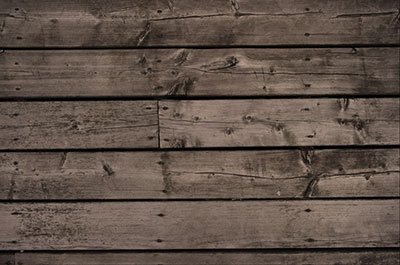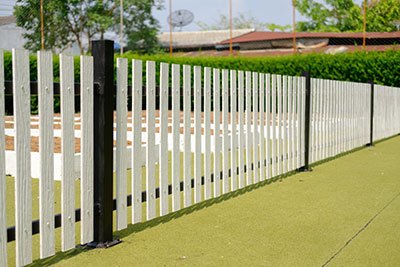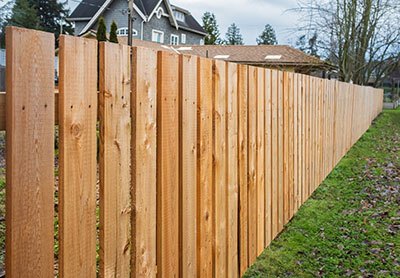Are you considering installing a fence around your property? One of the first questions you may have is whether or not fence boards need to be pressure treated.
Keeping a perfect-looking fence takes work and money, but with the right information, you can make sure you’re working smart and saving when it comes time for repairs or replacement.
In this blog post, we’ll guide you through everything there is to know about pressure-treating your wooden fence boards so that they remain in excellent condition for years to come.
Take away key points:
- Pressure-treated lumber offers more resistance, security, and strength than non-protected wood options
- You must paint, stain, and maintain non-maintained fences regularly to prevent damage
- The protected fencing systems better adjust and stand firmly on the ground for the years to come
Table of Contents
- Pressure-treated wood fence: Yes or no?
- FAQs
- Should I use treated or untreated wood for a fence?
- Can I use non-treated wood for a fence?
- Should fence panels be pressure treated?
- How long does an untreated wood fence last?
- When do you need pressure-treated wood?
- Can fence boards be used for decking?
- Can you build a fence with wet wood?
- Why cedar is not your best choice for a fence?
- Why fence boards warp and how to avoid it?
- Summary
Pressure-treated wood fence: Yes or no?
If you need to know whether or not you should pressure-treat your wood fence to extend the life of your fencing material, read our guide below.
We will explain how to keep several types of wood fences optimal, ad extend their lifespan.
About pressure-treated fence boards

Pressure-treated fence boards are an ideal choice for outdoor structures such as fences, decks, and landscaping projects. Pressure-treating wood helps protect it from the elements and pests, increasing its durability and longevity. This makes pressure-treated wood a great option for outdoor structures that need to withstand harsh weather conditions or frequent use.
Pressure-treated wood is infused with preservatives that help protect it from rot, decay, and insect infestations. The process of pressure treating wood involves forcing the preservatives deep into the wood fibers using a vacuum chamber and high-pressure pumps. This ensures that the preservatives penetrate deep into the wood, providing long-lasting protection against rot, decay, and insects.
When choosing pressure-treated lumber for your project, make sure to select a product that is rated for outdoor use. This will ensure that your project is built with materials designed to withstand harsh weather conditions and frequent use.
Additionally, look for products that are certified by third-party organizations such as the American Wood Protection Association (AWPA). These certifications guarantee that the product meets certain standards of quality and performance.
The process of pressure-treated lumber fences
During the procedure, the pressure-treated lumber is placed in a vacuum chamber along with a mixture of chemicals that are designed to protect it from outdoor elements like pests, bacteria, and fungi. The vacuum removes air from the chamber, allowing the chemicals to deeply penetrate the pressure-treated lumber.
While living trees are equipped with natural defense mechanisms, lumber fence posts used for outdoor structures lack access to those protective nutrients. Pressure treatment supplements the pressure-treated fencing material by providing additional protection against rot and decay.
The combination of chemicals used in the process helps fortify the wood, ensuring it lasts for a long time even after being cut and milled. It will prevent destructive insects, and make the wood durable and resistant to different damage types.
Pine picket fences are pressure-treated: Here is why
Pince is the most common pressure-treated wood for fencing materials. This wood type is an inexpensive, yet durable and sturdy solution. It can last for a couple of decades with proper care and maintenance. However, over time, the chemicals used in the pressure treatment process can fade or lose their effectiveness.
To maintain the longevity of your fence, it’s important to regularly apply stain, paint, or sealant to the wood. This will help protect your fence from the outdoor elements and ensure that it lasts for many years.
It’s also recommended to inspect your fence regularly for any damage or wear and tear and to address any issues promptly to prevent them from getting worse.
Cedar picket fence is not pressure-treated
Western red cedar, redwood, and cypress are popular choices for fencing because they are naturally resistant to insects, moisture, termites, and decay.
Unlike pine, cedar, cypress, and redwood do not require pressure treatment because they have their natural defense system. However, cedar and redwood still need regular painting, staining, and sealing for maximum durability of your garden fences.
While cedar is more resistant to insects and decomposition than pine, it’s not as strong as pine when it comes to soil protection. Therefore, many fencing installers recommend using pressure-treated pine or metal for the fence posts.
Those elements are in direct contact with the soil. The fence pickets, however, can still be made from cedar since they are installed slightly above the ground in your garden, yard, or other property.
When selecting other types of wood for your fences, consider the specific needs of your project. If insect and decay resistance is a top priority, cedar may be the best wood choice. If soil protection is an important factor, pressure-treated pine or metal fences may be a better option for fence posts.
Regardless of the type of wood you choose, regular maintenance is crucial for protecting your fences from the outdoor elements and preserving their longevity.
Regular maintenance tips for natural wood fences

Natural wood fences are a great way to add privacy and security to your home. However, they require regular maintenance to keep them looking their best and extend their lifespan.
Here are some tips for maintaining your wood fence:
– Clean the fence regularly with a pressure washer or soapy water to remove dirt, pollen, and grime.
– Apply a wood preservative every two years to protect the wood from rot and insect damage.
– Repaint or re-stain the fence every two to three years to keep it looking its best.
– Trim any overhanging branches or vines that could cause damage to the fence.
– Point sprinklers away from the fence so that water doesn’t accumulate on it and cause rot or mildew growth.
– Don’t hang items on the fence as this can put extra strain on it and cause it to lean over time.
– Check for signs of wear and tear such as loose boards, rotting wood, or rusting hardware, and repair them promptly if needed.
– Inspect for any insect infestations and contact an exterminator if necessary.
By following these tips you can ensure that your wood fence stays in top condition for many years!
Other materials without the need for a pressure-treated process
While wood is a common choice for privacy fencing, there are other materials available that require minimal maintenance and offer long-lasting durability.
One such option is vinyl or composite fencing, which provides the same level of privacy as wood but is manufactured to withstand outdoor exposure for a longer period. Vinyl fences require little maintenance but have higher a cost than pressure-treated lumber.
If privacy is not a concern, another option could be an iron or chain link fence. These materials require fewer maintaining steps than wood and do not obstruct the view into your yard or garden.
When considering different options for your fence, keep in mind your specific needs and preferences. While wood may be traditional and versatile, newer elements like vinyl, composite, and concrete offer durable constructions, and minimal maintenance. If privacy is not a concern, other options like iron or chain link may be a better fit for advanced security and resistant benefits.
Regardless of the material you choose, make sure to seek professional installation and practice regular maintenance to ensure the fence lasts as long as possible, and avoid decay, moisture, and rot.
FAQs
Should I use treated or untreated wood for a fence?
You should use pressure-treated lumber as your wood fence, as it lasts longer and prevents decay.
Can I use non-treated wood for a fence?
Yes, you can use the non-treated wood for a fence, but it won’t be resistant to moisture, decay, and damage.
Should fence panels be pressure treated?
Yes, you should use pressure-treated lumber fence panels for maximum strength and sturdiness to increase their lifespan.
How long does an untreated wood fence last?

The untreated wood might last up to 15 years, but the pressure-treated lumber will last up to 20 and more years.
When do you need pressure-treated wood?
You need the treated lumber when there is a high risk of moisture penetrating your wood constructions.
Can fence boards be used for decking?
Yes, you can use fence boards for decking.
Can you build a fence with wet wood?
No, you cannot. Although some treated lumber may not be affected by dampness, it is always best to use dry kiln-dried lumber. This ensures the longevity of the fence and prevents warping or rotting due to moisture.
Why cedar is not your best choice for a fence?
The main reasons include:
– Cost: it’s more expensive than other types of wood used for fencing
– Softness: it is a soft wood that can dent or scratch easily, making it vulnerable to damage from pets, children, or falling objects.
– Weathering: its beauty can fade over time without regular staining or sealing.
– Sturdiness: it may not be as long-lasting as some other options
Why fence boards warp and how to avoid it?
Warping occurs when moisture soaks into the boards and they expand in size, then shrink back when exposed to heat. Some steps can be taken to reduce the risk:
– Pressure-treated wood
– Pre-drying
– Strong construction
– Sealing
Summary
Treated lumber and similar wood options are more resistant to weather and water elements. They are ideal for longer outdoor use and a longer lifespan. So, based on your ground and soil features, choose the lumber, pine, and other wood models.
